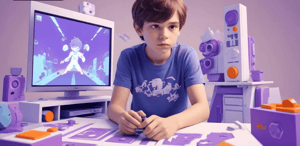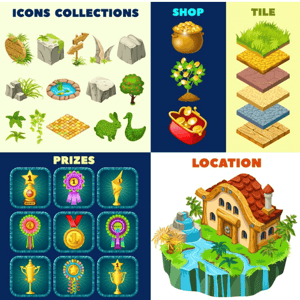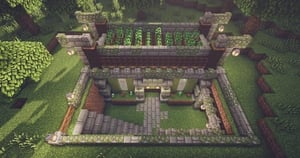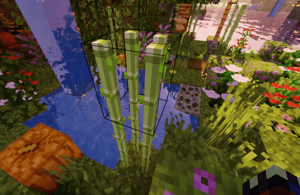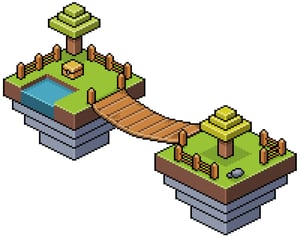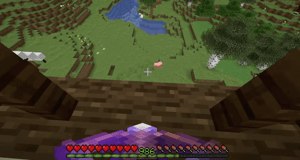Table of Contents
Roblox vs Minecraft: Which is Better for Learning Code?
Roblox and Minecraft are two popular platforms for teaching kids coding, each offering unique benefits depending on age, learning style, and goals.
- Roblox coding focuses on game creation with Lua scripting, ideal for kids 10+ who want hands-on coding experience. It’s more advanced but offers opportunities to create and even monetize games.
- Minecraft coding can start with visual block-based coding (MakeCode) and later progress to Python or Java, making it suitable for younger learners (6+) or beginners. It emphasizes logic and problem-solving through gameplay.
Both platforms encourage coding through interactive projects, but Roblox has a steeper learning curve, while Minecraft provides a smoother introduction.
Quick Comparison
| Feature | Roblox | Minecraft |
|---|---|---|
| Primary Language | Lua (text-based) | MakeCode (visual), Python, Java |
| Learning Curve | Steeper | Gradual |
| Best Age Range | 10+ years | 6+ years |
| School Integration | Roblox Education Platform | Minecraft Education Edition |
| Cost | Free to start, with optional purchases | $26.95 (one-time) |
Choosing the right platform depends on your child’s maturity, interests, and goals. Roblox suits teens interested in game development, while Minecraft is perfect for younger kids starting their coding journey.
Roblox for Coding Education
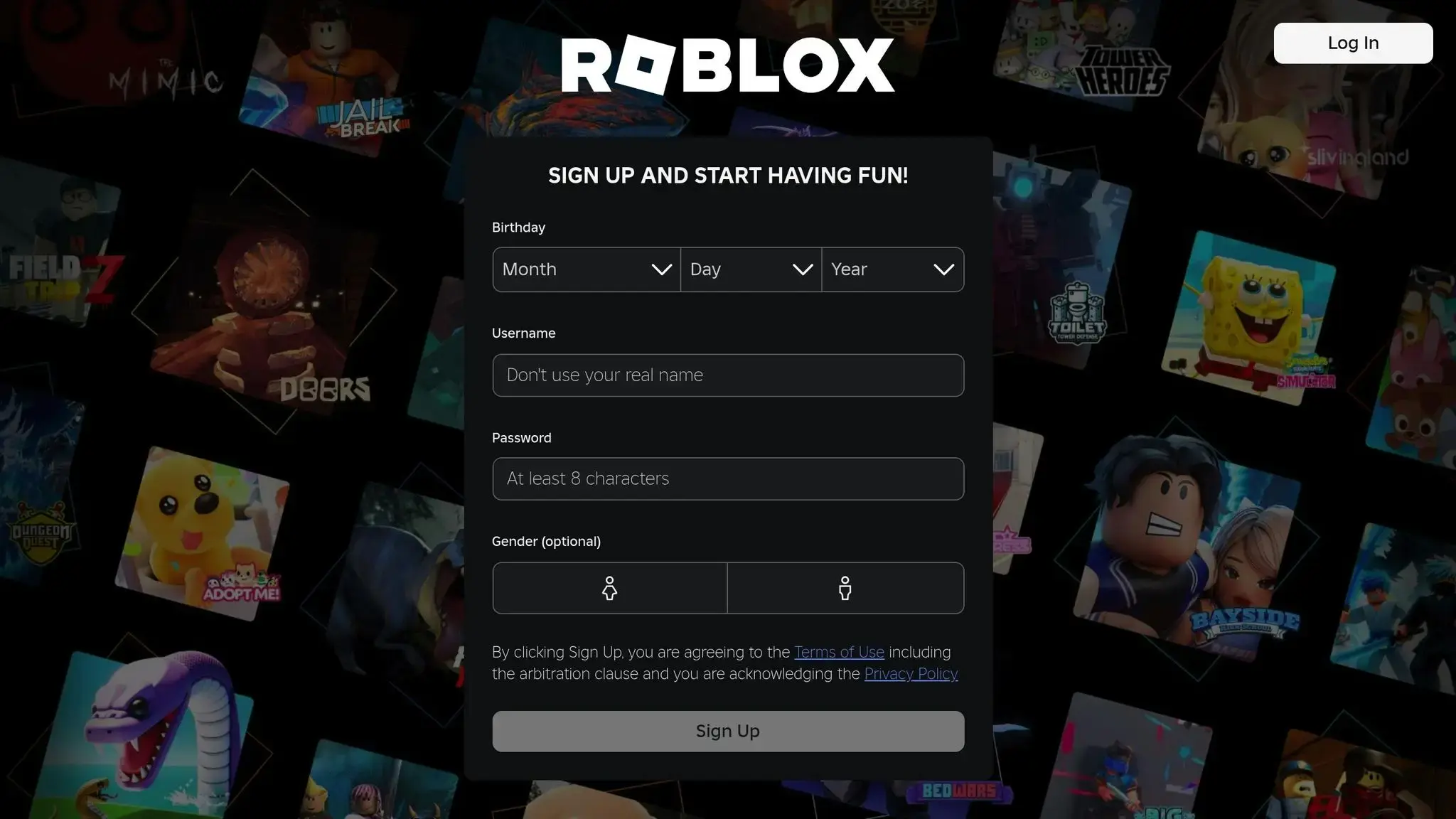
What is Roblox
Roblox isn’t just a platform for playing games; it’s a dynamic space where users can create, share, and explore games built by everyday people. With 178 million users and 64 million actively engaging every month, Roblox has become a favorite among kids and teens eager to dive into game development and coding. What makes it truly stand out is its focus on user-generated content – most of the games on the platform are created by its users rather than professional developers. Considering that over 60% of its audience is under the age of 16, Roblox naturally appeals to young learners who are curious about coding. And thanks to its beginner-friendly design, it’s an excellent starting point for budding programmers, especially with its use of Lua.
Lua Programming Language
Roblox runs on Lua, a programming language that’s perfect for beginners. Lua’s simplicity lies in its design – just 21 basic commands – making it one of the easiest programming languages to learn. For comparison, Lua has fewer keywords than Python (24 vs. 35), which means newcomers can grasp its fundamentals much faster. IT Consultant Hanno Behrens puts it best:
“Lua is one of the most simple languages there are… Just 21 simple English-like basic commands… so that you can do a full Lua tutorial with every feature the language itself has in less than a lazy afternoon.”
Roblox uses a customized version of Lua called Luau, which is optimized for better performance while keeping the language approachable for beginners.
How Kids Learn to Code with Roblox
Roblox flips the script on traditional coding lessons by teaching through hands-on game creation. Kids don’t just learn concepts – they actively build games and see their code come to life in real time. This immediate feedback helps them grasp programming fundamentals quickly while boosting their confidence. Matthew Kirstein, a Roblox Game Developer at CodaKid, explains:
“Roblox provides kids with a complete game creation engine with a convenient IDE (text editor), the relatively easy to learn scripting language Lua, and new AI functionality. Kids can take their creations and post them on Roblox where millions of people can instantly play them.”
The platform also encourages collaboration. Kids can work on projects together, share their creations, and learn from each other’s code. Jason Rausch, Senior Vice President of Programs at Project Lead the Way, highlights this interactive aspect:
“We believe Roblox provides an amazing opportunity to meet students where they enjoy to be and that the collaborative, engaging nature of the platform makes learning fun and relevant.”
Young learners typically start with basic programming concepts like if/then statements and loops. As they grow more confident, they advance to more complex techniques. This combination of hands-on projects and instant results makes Roblox a powerful tool for teaching coding.
Getting Started and Resources
Roblox Studio, the platform’s free development tool, is designed to be user-friendly for beginners. It’s compatible with both Windows and Mac, making it accessible to a wide audience. To support new coders, Roblox offers a wealth of resources on its Developer Hub. These include:
- Tutorials for creating games and avatars
- Guides on skills like modeling, UI design, and scripting
- Curriculum paths for deeper exploration into game development
For families looking for structured learning, services like CodaKid offer self-paced Roblox coding courses starting at $29 per month. These courses include video tutorials, 24/7 support, and certificates of completion, providing a guided path for young learners.
Creative Projects
Roblox opens the door to endless creative possibilities. Kids can design games that incorporate 3D models, custom animations, sound effects, and more. Whether they’re building a simple obstacle course or a complex interactive experience, the creative freedom keeps them engaged and motivated to continue coding.
Dan White, Chief Executive Officer of Filament Games, emphasizes how Roblox balances education and entertainment:
“In Roblox we see a powerful platform that will allow us to design an experience that entertains and educates in equal measure. The platform accommodates the optimization and access needs of K-12 institutions. The multiplayer features are also a huge help – real-life competitive robotics events often have thousands of participants, so Roblox also gives us a turnkey avenue towards massively multiplayer interaction.”
Roblox’s multiplayer capabilities are another standout feature. Kids can create games that host hundreds – or even thousands – of players at once. This not only gives them a real sense of accomplishment but also helps them understand how their code shapes the experiences of others in a tangible way.
Minecraft for Coding Education

What is Minecraft
Minecraft is a hugely popular sandbox game where players can build and explore endless 3D worlds. Instead of following a rigid storyline or objectives, players are free to create anything they imagine – from simple shelters to sprawling cities and even functional machines. This open-ended gameplay naturally encourages logical thinking and problem-solving, which are key foundations for learning to code.
For classroom settings, Minecraft offers an Education Edition tailored for teaching. This version comes with structured lesson plans, teacher tools, and built-in coding features, making it easy for educators to introduce programming concepts. Since many kids are already familiar with Minecraft, they can dive right into learning coding skills without needing to first grasp the game’s mechanics.
Programming Languages in Minecraft
Minecraft supports a step-by-step approach to learning how to code. Beginners can start with visual, block-based programming using tools like MakeCode, which is especially suited for younger learners and educational settings. As students build confidence, they can move on to text-based programming languages like Python and Java.
Java plays a central role in Minecraft coding, known for its versatility and cross-platform capabilities. Python, another widely-used language, is also supported, particularly in the Education Edition. This layered approach – starting with block-based coding and advancing to text-based languages – provides a smooth learning curve, making coding accessible for a wide range of skill levels.
How Kids Learn to Code with Minecraft
Minecraft introduces coding concepts through interactive, hands-on experiences. For instance, players can use Redstone logic, which works like basic electrical circuits, to understand inputs, outputs, and logical operations. Beginners often start with MakeCode’s block-based commands, which are simple and intuitive. As they progress, they can take on more advanced tasks, like writing scripts or modifying the game using code.
Modding is another exciting way for kids to learn. By customizing the game’s mechanics and features, learners get to apply their coding skills in creative and practical ways. The Education Edition further supports this journey with pre-designed lesson plans and tools that guide both students and teachers.
Getting Started and Resources
Minecraft runs on various platforms, including PCs, consoles, and mobile devices, with the Education Edition specifically designed for schools. A variety of resources are available to help kids learn coding through Minecraft:
- Tynker: Offers Minecraft coding courses that focus on block-based programming, teaching kids how to create mods, design custom items, and tweak game behavior.
- CodaKid: Provides courses that teach Java programming through Minecraft modding, earning praise from both students and parents.
- Hour of Code: Minecraft participates in this global initiative, introducing kids to coding with fun, beginner-friendly activities.
Additionally, Minecraft benefits from a vibrant online community. Tutorials, forums, and discussion groups on platforms like YouTube, Reddit, and Discord make it easy to find help and inspiration.
Building and Problem-Solving Skills
Through its building mechanics, Minecraft encourages critical thinking and creativity. Features like Redstone circuits teach kids how to break down large problems into smaller, manageable tasks – an essential skill in programming. Collaborative projects within the game also help students develop teamwork and communication skills.
The Education Edition enhances this experience with tools like Classroom Mode, which allows teachers to monitor multiplayer sessions, pause gameplay for instructions, and ensure a secure environment by restricting online access. These activities help kids strengthen spatial reasoning, planning, and troubleshooting abilities, all of which are directly applicable to coding and software development.
Just like Roblox, Minecraft blends coding with creativity, offering an engaging way for kids to build essential programming skills while having fun.
Let’s Build Tutorial: How to Make Minecraft Game in Roblox
Roblox vs Minecraft: Direct Comparison
When it comes to coding education, Roblox and Minecraft each bring distinct strengths to the table. Their differences cater to varying learning styles and experience levels, making them suitable for different types of learners.
One major distinction is their learning curves. Minecraft takes a more beginner-friendly approach, offering a gentle introduction to coding concepts. This makes it an excellent choice for younger learners or those completely new to programming. Minecraft’s redstone mechanic, for instance, introduces logic gates and algorithmic thinking through gameplay – no prior programming knowledge required. On the other hand, Roblox dives straight into text-based coding using Lua scripting. This requires learners to grasp programming concepts right from the start, which can be challenging for beginners but rewarding for those ready to take on a steeper learning curve.
“Programming on Minecraft is great for young kids to start off with; with drag and drop blocks; which also allows for an easy transition into text-based languages as the student advances. That is why Minecraft is suitable for all ages and programming levels.” – Coding Lab
Both platforms build foundational coding skills, but their approaches differ significantly.
Feature Comparison Chart
| Feature | Roblox | Minecraft |
|---|---|---|
| Primary Programming Language | Lua (text-based scripting) | MakeCode (visual), Python, Java |
| Learning Curve | Steeper – requires basic programming knowledge | Gradual – starts with visual coding |
| Best Age Range | 10+ years (teens preferred) | 6+ years (all ages) |
| Coding Approach | Immediate text-based scripting | Visual blocks → text-based progression |
| Educational Resources | Developer-focused resources | Extensive general learning content |
| School Integration | Roblox Education platform | Minecraft Education Edition (used in 100+ countries) |
| Community Support | Strong developer community | Massive educational community |
| Monetization Potential | Earn in-game currency | Limited commercial opportunities |
| Platform Availability | PC, mobile, consoles | PC, mobile, consoles, dedicated Education Edition |
| Cost | Free to start, with optional Robux purchases | Varies by edition ($7–30) |
The educational resources offered by each platform also vary. Minecraft Education Edition is widely adopted, serving over 35 million students and educators across more than 100 countries. It provides structured lesson plans and classroom tools. Roblox Education, while newer, emphasizes game development and distributed $25 million in grants to educational organizations in 2025.
Programming complexity further sets the two apart. Lua, used by Roblox, is a simpler text-based language compared to Java, but it still requires learners to understand syntax and logic early on. Minecraft’s MakeCode, by contrast, starts with visual block-based coding, allowing beginners to build confidence before transitioning to more advanced text-based languages. As a result, Roblox often demands a higher level of programming knowledge for creating anything beyond basic features. A counter argument is that Minecraft modding (modifying the source code of Minecraft with Java) can actually involve some strange code that I don’t think provides the transferable skills of Roblox coding.
Ultimately, both platforms shine in their own ways. Minecraft is ideal for younger learners or those seeking a gradual introduction to coding through visual tools. Roblox, on the other hand, offers a more immersive text-based coding experience and the opportunity to earn in-game currency through creative projects. The choice depends on whether you’re looking for gradual learning or a more advanced, hands-on coding challenge.
How to Choose the Right Platform
Picking the right platform for your child means considering their age, interests, learning goals, safety, and your budget. These factors build on the unique educational features of each platform discussed earlier.
Match Platform to Learning Style
For younger learners (ages 8 and up), Minecraft offers an approachable entry into coding through its block-based system, gradually building skills over time. On the other hand, Roblox appeals to older kids and teens with its text-based Lua scripting, giving them a chance to dive into more advanced game development. While Minecraft provides a steady, step-by-step learning curve, Roblox delivers a more hands-on, creative coding experience.
If your child thrives on structure, Minecraft might be the better fit. A 2023 study revealed that 87% of students who used Minecraft showed better problem-solving skills. Meanwhile, kids who enjoy experimenting and creating may gravitate toward Roblox‘s dynamic coding environment.
Social interaction is another key factor. Minecraft is more suited for solo play, making it ideal for independent learners or families that prefer limited online interaction. In contrast, Roblox emphasizes collaboration right from the start, offering a highly social experience. However, this also means parental oversight is crucial to ensure a safe environment.
“Given the Wild West nature of both of these games, consider sitting with your kid while he or she learns to play and checking out the related online forums and videos to find out which game is the best match for your kid’s age, experience, and interests.”
- Common Sense Media
Safety and Parental Controls
When it comes to safety, Minecraft tends to be a safer option, offering offline play and moderated servers. This makes it a great choice for younger children. Roblox, however, requires more active parental involvement due to its dynamic online interactions. For example, children under 9 need parental permission to access “Moderate” content, which might include mild violence or crude humor. While Roblox can be a fantastic learning tool for older kids interested in advanced coding and game design, consistent supervision is essential.
Budget and Costs
Cost is another practical consideration. Minecraft involves a one-time purchase of around $26.95, whereas Roblox is free to play but heavily relies on microtransactions and premium memberships, which range from $4.99 to $19.99 per month. If your child has a good understanding of digital spending, Roblox might be worth the ongoing expenses. In fact, a 2023 EdWeek report found that students in Roblox STEM programs improved their computational thinking skills by 30% after just one semester. For some families, this educational benefit can make the additional costs worthwhile.
“Ultimately, the best decision depends on your child’s maturity level and interests. Both games have unique benefits, so letting them explore both (with proper safeguards) could be ideal.”
- Stealth Gaming
Conclusion
Minecraft and Roblox each open the door to coding in their own unique ways, catering to different learning styles and goals. Minecraft serves as an excellent starting point, offering a gradual transition from visual programming tools to advanced Java coding. This makes it a great fit for younger learners or beginners. Its structured learning approach has shown real results – according to a 2023 Minecraft Education study, 87% of students using its 250+ lesson plans improved their problem-solving abilities.
Roblox, on the other hand, dives straight into game creation with Lua scripting, appealing to teens and older kids who want hands-on experience in professional game development. Both platforms encourage creativity and self-directed learning, but having structured guidance can make a big difference.
This is where programs like CodaKid shine, turning casual gaming into a serious educational experience. With over 100,000 students and a stellar 4.9 out of 5 rating from 350+ reviews [11,38], CodaKid bridges the gap between fun and learning. It offers a curriculum packed with 85+ video courses, 750+ detailed instructional videos, and 800+ hours of projects. Certified teachers provide unlimited help desk support, ensuring kids get the assistance they need. A 2023 EdWeek report even highlighted a 30% improvement in computational thinking scores for students involved in Roblox STEM programs after just one semester.
CodaKid uses a rewards-based approach to keep kids motivated, blending the excitement of game development with the structure they need to thrive. Whether your child enjoys the creative sandbox of Minecraft or the game-building focus of Roblox, programs like this can help them develop real coding skills.
As parent Terrence Masson shared:
“I’ve tried several online 1-on-1 coding classes for my son (starting at age 7, he’s now 9) and CodaKid is outstanding in the quality of its instructors and ease of operation; he’s doing Java coding for Minecraft mods and LOVES it”.
Ultimately, the best choice depends on your child’s interests, learning style, and maturity level. With the right tools and guidance, both platforms can serve as a launchpad into the world of programming, setting kids up for future success in technology.
FAQs
How do Roblox and Minecraft compare as platforms for teaching kids to code?
Both Roblox and Minecraft offer fun and engaging ways for kids to dive into coding, but they cater to different interests and learning approaches.
Roblox introduces kids to coding through Lua, a programming language that’s easy to pick up for beginners. The platform encourages creativity by allowing users to design and build their own interactive games. This hands-on experience not only teaches scripting but also gives kids a taste of game development, making it a great choice for young aspiring developers.
Minecraft, on the other hand, leans into modding and problem-solving. It supports coding with languages like Java, Python, and JavaScript, and often starts beginners off with block-based coding tools. This setup helps kids grasp programming concepts while letting them customize their Minecraft world, making it an excellent fit for those who enjoy tinkering and exploring different coding languages.
So, if your child dreams of creating their own games, Roblox might be the way to go. If they’re more interested in modding and experimenting with various coding tools, Minecraft could be the better choice.
What are the differences in learning curves between Roblox and Minecraft, and which is better for beginners?
When it comes to ease of use, Minecraft shines as a great starting point for beginners, especially younger kids or those just stepping into the world of coding. Its block-based coding tools and straightforward design make it simple to pick up and understand, helping users grasp basic programming concepts without feeling intimidated.
Roblox, on the other hand, offers a more in-depth and challenging experience. While this added complexity might feel daunting for newcomers, it opens the door to more advanced coding possibilities as users gain confidence. For beginners, Minecraft tends to be the better option, while Roblox is ideal for those ready to tackle more ambitious projects.
What should parents think about when deciding between Roblox and Minecraft for teaching their child to code?
When deciding between Roblox and Minecraft for coding education, it’s essential to weigh factors like your child’s age, skill level, and interests. Roblox introduces coding through Lua, a scripting language that’s easy for beginners to pick up. Minecraft, however, often uses Java, which is more complex but provides a foundation for broader programming opportunities.
Consider your child’s learning preferences as well. Roblox focuses on creating games and designing interactive experiences, encouraging creativity and problem-solving skills. Meanwhile, Minecraft leans more toward building and modding, which can strengthen logical thinking and spatial awareness.
Lastly, think about the accessibility of each platform and the educational resources they provide. Both offer tools, tutorials, and active communities to help kids dive into coding. The best choice will depend on what sparks your child’s curiosity and keeps them excited to learn.







